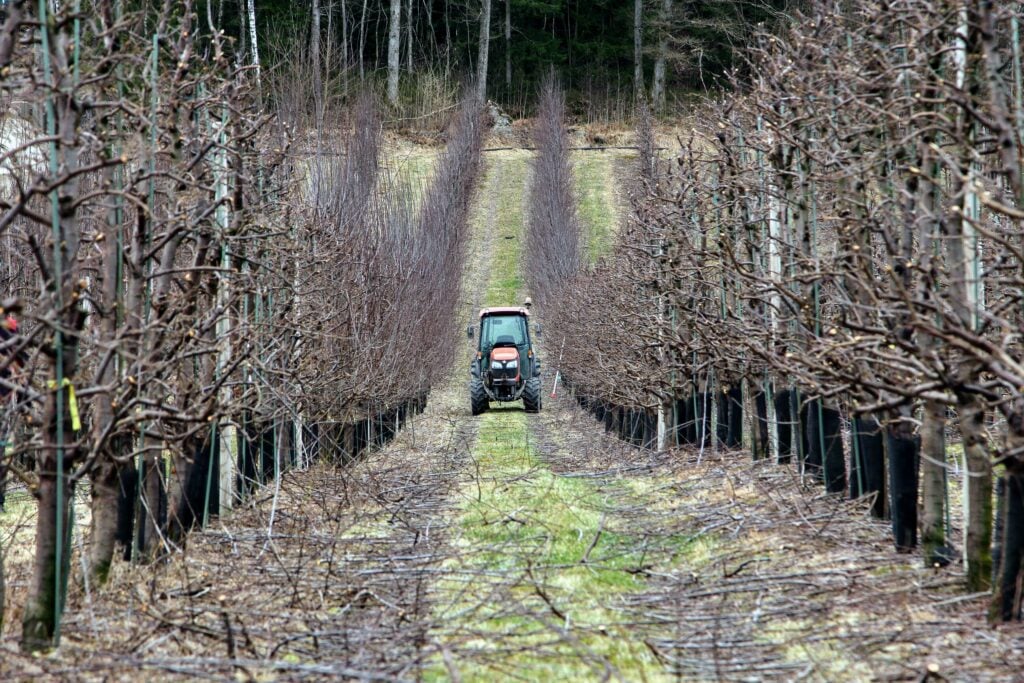Why measuring return on investment per field is still a challenge
Return on investment per field. Why is it so hard? Lars Petter Blikom explores the topic of knowing ROI per field.

Return on investment per field. Why is it so hard? After 7 years of farming, knowing our own ROI per field seems like a holy grail.
I have a few hobbies. One of them is importing wine to Norway. I know next to nothing about wine qualities, but I know everything about the economics of wine imports. The ROI per product line automatically pops up on my computer screen.
But for farming, eludes me.
Back in 2014, when I and my two partners were planning our ventures into agriculture, we built a pro forma financial simulation for our farming plans. We even included simulations of bad seasons, yield variations, unexpected costs, and so on. However, it has come as a complete surprise how quickly expected revenue for a crop can drop to zero. With agronomy eyes, I think it’s a safe assumption that any given field will always bear some crop – it will never be zero. But with economic eyes, a 50-70% drop in crop volume is, in most cases, going to translate into zero, or negative, in economic terms. You should walk away, and cross your fingers for a better crop next season.
The reason for this is the consequent drop in efficiency during manual harvest.
Typically in business, potential rewards are proportional to risks. Take high risks, and you can potentially make a lot of money. Take a low risk, and you can make small money, but with higher predictability.
Farming is not a typical business. In farming, you take high risks in every investment you make. You are at the mercy of the weather and tiny personal mistakes. And you are very rarely compensated with high margins.
In most cases, from an educated business perspective, an investment in farming is a horrible idea. Not knowing your ROI is often better for mental health.
I mixed chemicals in the spray tank, and there were bio oil residues in the tank from a previous spray. This caused a chemical reaction in the tank, which produced a mixture that was poisonous to the crop I sprayed. The result: 100% loss of 3 hectares of strawberries.
We got new apple trees from our supplier in the Netherlands. Unknown to us and them, the sun was too strong during one of their latest sprays before shipping the trees to us, resulting in a heat-catalyzed reaction. The result: 2 years delay in yield uptake for 5 hectares of apples.
Last year, we had an unusually warm January, so growth started prematurely. The result: 70% productivity loss / 100% economic loss for 3 hectares of raspberries.
That’s farming. Or gambling, as most people would call it.
Since gambling is what we do, we can’t put all eggs in one basket. That’s one of the reasons we have so many different crop types and varieties. But this makes it increasingly hard to distribute costs on the various crops.
If we had perfect data for the past 7 seasons, we could gamble better. There is a huge difference between ignorant gamblers and informed gamblers. So let’s get informed.
ROI in farming isn’t complex at all:
Return on investment = (sum of profits – cost of investment) / cost of investment
The cost of investment should be available from your company accounts from the planting year, provided you´ve got tidy accounts.
Then you need to calculate profits for the field for every year of its operation:
Profit = Revenue – cost of labour – cost of inputs
The revenue is a direct result of harvested volume times achieved sales price. By keeping organized harvest logs, the rest can be automated.
Hours worked are readily available data in the timesheet application that’s being used. But only if the timesheet system is fully integrated, or otherwise talks with the rest of the data management system.
Variable costs are mostly chemicals and fertilizers, and these costs are readily available from the treatment logs. Again, provided that the treatment logs are kept tidy and talked with the rest of the data management system.
Get this information under control, and you get a decent estimate for ROI per field as a reward.
I know. It’s easier said than done.
One thing is to use knowledge of historic ROI to make better-informed investment decisions in the future, but there is another use. When testing out new technologies, new farming practices, or whatever smart idea the latest salesperson brings, you need to know your baseline. You need to know where you are coming from if you are going to determine if something new is better, worse, or equal.
With ROI down, in the next blog posts, we´ll start exploring what those smart ideas for new farming practices might be.
This is part four in a seven-part series on a farmer’s journey to precision agriculture.
Part 1: Precision agriculture isn’t what they say it is
Part 2: What problems will precision agriculture solve
Part 3: Reinvent how you gather, organize and use your data
Part 5: What’s the biggest cost in agriculture? Labour.
Part 6: How to get your orchard future ready? Start automating documentation
Part 7: How variable zoning can lead to more precision in agriculture

